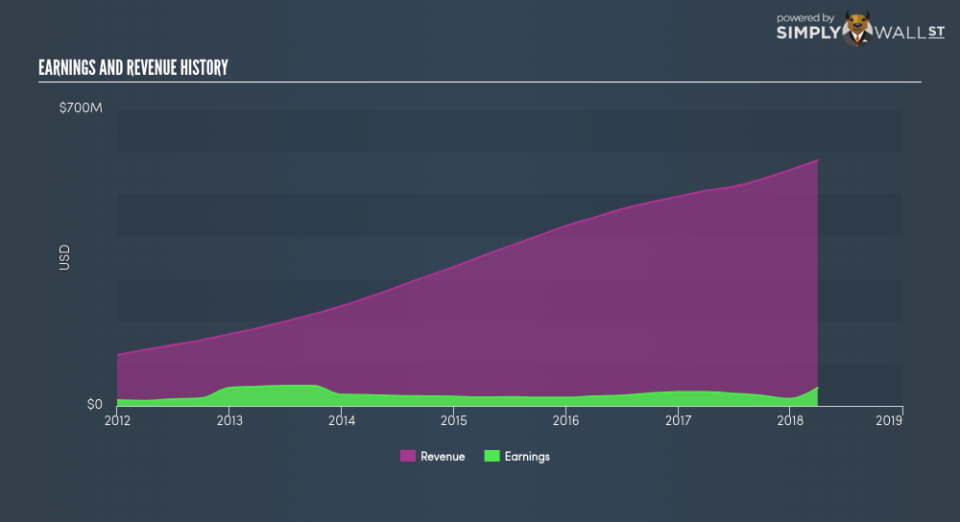Did Shutterstock Inc’s (NYSE:SSTK) Recent Earnings Growth Beat The Trend?

When Shutterstock Inc (NYSE:SSTK) released its most recent earnings update (31 March 2018), I wanted to understand how these figures stacked up against its past performance. The two benchmarks I used were Shutterstock’s average earnings over the past couple of years, and its industry performance. These are useful yardsticks to help me gauge whether or not SSTK actually performed well. Below is a quick commentary on how I see SSTK has performed. See our latest analysis for Shutterstock
Commentary On SSTK’s Past Performance
SSTK’s trailing twelve-month earnings (from 31 March 2018) of US$42.71m has jumped 29.03% compared to the previous year. Furthermore, this one-year growth rate has exceeded its 5-year annual growth average of 1.43%, indicating the rate at which SSTK is growing has accelerated. What’s enabled this growth? Well, let’s take a look at whether it is solely due to an industry uplift, or if Shutterstock has seen some company-specific growth.
The ascend in earnings seems to be supported by a substantial top-line increase outpacing its growth rate of costs. Though this has led to a margin contraction, it has made Shutterstock more profitable. Viewing growth from a sector-level, the US internet industry has been growing its average earnings by double-digit 17.40% in the prior twelve months, and 18.27% over the past half a decade. This shows that any tailwind the industry is profiting from, Shutterstock is able to leverage this to its advantage.
In terms of returns from investment, Shutterstock has not invested its equity funds well, leading to a 11.96% return on equity (ROE), below the sensible minimum of 20%. Furthermore, its return on assets (ROA) of 6.83% is below the US Internet industry of 7.42%, indicating Shutterstock’s are utilized less efficiently. And finally, its return on capital (ROC), which also accounts for Shutterstock’s debt level, has declined over the past 3 years from 13.29% to 7.11%.
What does this mean?
Shutterstock’s track record can be a valuable insight into its earnings performance, but it certainly doesn’t tell the whole story. Companies that have performed well in the past, such as Shutterstock gives investors conviction. However, the next step would be to assess whether the future looks as optimistic. I recommend you continue to research Shutterstock to get a more holistic view of the stock by looking at:
Future Outlook: What are well-informed industry analysts predicting for SSTK’s future growth? Take a look at our free research report of analyst consensus for SSTK’s outlook.
Financial Health: Is SSTK’s operations financially sustainable? Balance sheets can be hard to analyze, which is why we’ve done it for you. Check out our financial health checks here.
Other High-Performing Stocks: Are there other stocks that provide better prospects with proven track records? Explore our free list of these great stocks here.
NB: Figures in this article are calculated using data from the trailing twelve months from 31 March 2018. This may not be consistent with full year annual report figures.
To help readers see pass the short term volatility of the financial market, we aim to bring you a long-term focused research analysis purely driven by fundamental data. Note that our analysis does not factor in the latest price sensitive company announcements.
The author is an independent contributor and at the time of publication had no position in the stocks mentioned.

 Yahoo Finance
Yahoo Finance 
